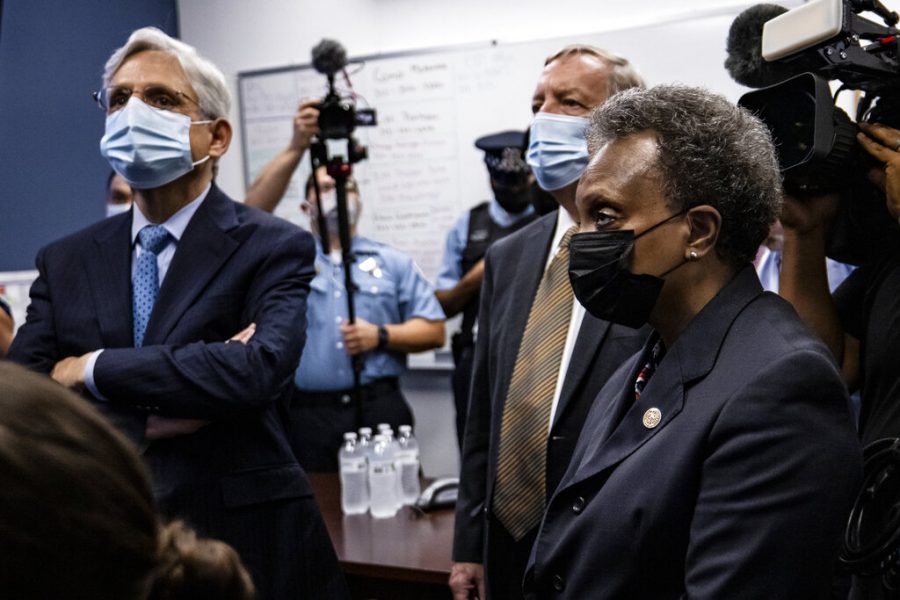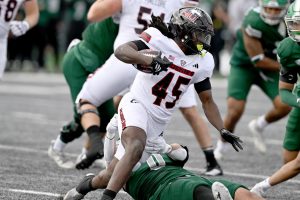Editorial: Lightfoot anti-violence plan shows promise
AP
Attorney General Merrick Garland (left) listens to a presentation with Sen. Dick Durbin, D-Ill., center, and Chicago Mayor Lori Lightfoot, while visiting the Chicago Police Department Strategic Decision Support Center in Chicago, Thursday, July 22, 2021. Lightfoot had asked for the federal government’s help in curbing Chicago’s rising numbers of gun related crimes in the city. (Samuel Corum/Pool via AP)
August 5, 2021
In a year that has already brought so much pain and suffering to the American people due to COVID-19, the last thing the country needs is another crisis taking the lives of innocent people.
Unfortunately, that is exactly what the U.S. has on its hands. Gun violence rates are up across the U.S., according to the Gun Violence Archive, a not-for-profit corporation that collects and disseminates gun violence incidents from over 7500 reputable outlets.
The City of Chicago has seen an increase in gun violence and crimes over the past several years, with 2021 remaining on pace to be one of the city’s bloodiest since 2016.
Without a light at the end of the tunnel, Chicago Mayor Lori Lightfoot gave a candid response to reporters in her July 22 news conference.
“It’s obvious: we cannot arrest our way out of this problem,” Lightfoot said.
The mayor’s comments appeared as a change in tone when it comes to the issue of gun violence. Lightfoot believes that tackling the socioeconomic problems in the city’s neighborhoods will help curb gun violence more than just flooding zones with police officers.
Lightfoot’s approach of investing economic development into the south and west sides of Chicago through “INVEST South/West” will take time, but investing in neighborhoods like Austin, North Lawndale, Humboldt Park and South Chicago has the potential to change the path Chicago is going down.
Lightfoot points to this lack of infrastructure, social services and high concentration of poverty as risk factors that contribute to the cycle of violence in the city, according to the City of Chicago’s 2020 “Our City, Our Safety” plan.
Lightfoot is arguing that, if citizens do not have access to adequate healthcare, jobs, housing and basic necessities those citizens are more likely to seek out those means from other organizations such as gangs, organized crime or continue the cycle of poverty in low-income neighborhoods.
The mayor has identified and prioritized these risk factors, and now it’s up to citizens of Chicago and the surrounding areas to get onboard with the proposed efforts. If the problems in Chicago’s west and southwest neighborhoods do not get addressed, those problems have the possibility of moving throughout the state, including to campus. NIUs student population is made up of 60.14% of students from either Cook or the surrounding collar counties, according to the 2019 NIU Student Profile.
With such a large percentage of the student body having some connection, or closer distance to this crisis, this problem gains a larger audience. The Northern Star editorial board encourages everyone to become informed on these initiatives and support the City of Chicago’s efforts in curbing gun violence by addressing the root problem: socioeconomic inequality in Chicago.







